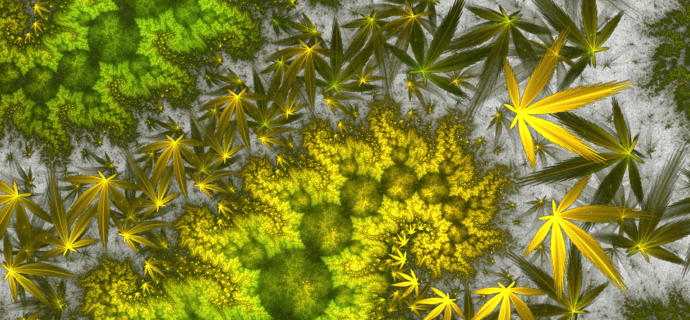Cannabinoids are psychotropic substances found in cannabis plants. Their consumption activates the endocannabinoid system, considered to regulate the homeostatic mechanism. Homeostasis is the ability of humans to preserve the inner environment stable, in spite of the external changes. Cannabinoids also have pharmacological effects, acting as anticancer agents, as well as participating into diabetes-related biochemical pathways. University of Berkeley researchers generated an enzymatic system that turns sugar into cannabinoids with the help of the yeast Saccharomyces cerevisiae.
Cannabinoids are “chemical messengers”, transfering signals to the endocannabinoid system. They are distinguished into two categories: endocannabinoids and extrocannabinoids. The first category includes chemical substances naturally produced within the human body and they constitute neurotransmitters of short duration, whereas, the latter refers to compounds mostly found within plants and display higher effect intensity. The endocannabinoid system consists of two receptors, CB1 and CB2. Each receptor reacts to different cannabinoids, however there are some receptors that react to both. When a cannabinoid activates a receptor , different functions of the organism can alter, such as appetite, temper, sleep and cardiovascular activity. Moreover, the endocannabinoid system activity can be studied for the treatment of various disease. Nevertheless, cannabinoids are produced and act only when there is a need to do so. On the contrary, the consumption of exogenous cannabinoids activates the receptors more intensively and for longer, without any internal stimulus. Following regular use, the organism gets used to the intake of these particular substances and craves for larger quantities, with the side effect of poison and potentially even death.
As previously mentioned, cannabinoids are interesting pharmaceuticals. They can contribute to the reduction of nausea after the implementation of chemotherapy, boost the appetite of AIDS patients, and reduce of the feelings of tiredness and pain. Their two major advantages are their high solubility – which allows them to act on the brain even in small quantities – and their low toxicity. Scientists persistently study two important and interesting substances, tetrahydrocannabinol (THC) and cannabidiol (CBD). THC is the main psychotropic substance of cannabis. It is used for entertaining purposes and it causes disputes of a great degree due to its effects on memory and awareness. However, its healing properties are many, such as in the treatment of Parkinson’s and other illnesses which include muscle stiffness, dealing with chronic pain, while it finds use during chemotherapy and anticancer therapy. CBD is a non-psychotropic cannabinoid and it has antipsychotic actions: this means that it works in the opposite way than THC. It is worth mentioning that CBD reduces the toxic side-effects of THC, such as memory problems and paranoia. CBD shows certain pharmacological properties, such as anti-inflammatory, antipsychotic and anti-epileptic actions. It is used in stress and depression treatment, in the adjustment of obesity. as well as a potential anticancer agent.


Apart from the production of cannabinoids in yeast, a German, pharmaceutical company, Farmako, recently obtained a patent for a procedure in which the genetically modified tequila bacterium produces a range of biosynthetic cannabinoids. According to the company, this method can reduce the cost of cannabinoid synthesis by a thousand times. Bacterium Zymomonas cannabinoidis, a gene-edited version of Zymomonas mobilis, which is used to produce tequila, can produce cannabinoids by removing a gene from the bacterial genome. At the same time, the use of bacteria instead of yeast could make the cannabinoid extraction process much easier on an industrial scale, as bacteria directly secrete the products without having to metabolize them, as in the case of yeasts.
To sum up, some cannabinoids have psychotropic effects and they can very well be used into dealing with various situations which disrupt the normal operation of human organism. It is for this reason that scientists seek new production methods with the potential of producing great quantities of cannabinoids as compared to to extraction from the cannabis plant. Such a process might make their exploitation more feasible, producing larger quantities, new compounds with novel effects, and facilitating medical research for better understanding of the compounds. This metabolic engineering work reported by UC Berkeley is an important step towards this direction, and a good example of how synthetic biology can be used to increase the availability of difficult-to-obtain compounds.
The post is translated from Greek, and originally appeared at the Omic Engine website (see the original here).

Original Article: https://blogs.plos.org/synbio/2019/05/06/microbial-production-of-cannabinoids/










